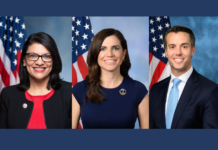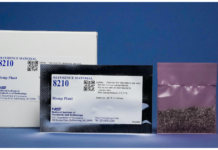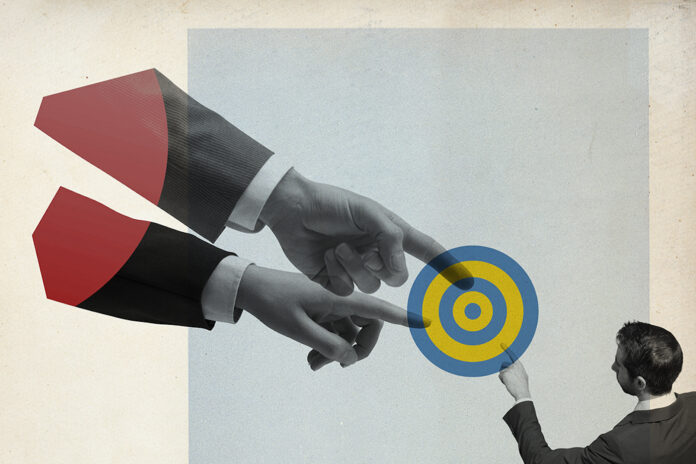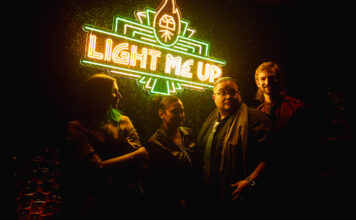When global advertising trade publication Adweek discusses your campaign in a positive light, you know you’ve hit your mark. When the magazine hosts a webinar the following year to reflect on the success of a limited-run exclusive cannabis product that was available in only one market, the rest of the industry should take note.
The exploration of physical, digital, and experiential marketing is a roadmap for success laid by infused beverage company Cann, dispensary chain Sweet Flower, and Swedish dark-pop performer Tove Lo.
“Within the cannabis community space, we try to work really closely with brands,” said Tim Dodd, co-founder and chief executive officer at Sweet Flower, which operates dispensaries in Los Angeles. According to Dodd, Cann approached him with the idea to collaborate on a project with Lo. “Tove lives in Studio City, and she shops at [Sweet Flower],” Dodd said. “I think of Tove as a brand. A couple million followers on Instagram, huge audience, very 420-friendly, very forward-looking.”
The collaboration took shape with the creation of a new Cann flavor: Passion Peach Mate, a caffeinated and infused adult beverage that could take the place of a vodka Red Bull or espresso martini.
Some aspects made the alliance extraordinarily appealing and were integral to success, Dodd said: The product was exclusive to Sweet Flower’s market, the flavor was unique, and building the campaign in cooperation with Lo lent an air of authenticity to the project. “Luke [Anderson, Cann’s co-founder] came with a whole bunch of flavor profiles and said ‘Which do you like?’ We liked Passion Peach,” said Dodd. “We also really let Tove drive the creative. Working with creatives, you just want to get out of their way. If she feels it, she’ll drive it.”
Authenticity is key
Cann counts a number of celebrities among its investors and board members. Anderson is no star-struck neophyte, though. “We had a number of celebrity investors who wanted to make custom versions of their own Cann,” said Anderson. “It’s nice to do that, but celebrity partnership really only works well when it translates into retail sales.”
He pointed out significant planning goes into executing any collaboration, especially one involving celebrities, and stressed the importance of understanding all partners’ motivation. “A lot of people want to go in and create a press-worthy, disruptive experience that drives revenue for everyone involved, but they’re so focused on driving revenue or getting press that they don’t think about the nuts and bolts of how to bring a collaboration to life authentically,” he said.
Primary among those nuts and bolts: Entering a traditional relationship in which a celebrity is paid a substantial amount to represent a product comes with a level of uncertainty as to how the campaign will be received. “It’s risky working with talent or celebrities in collaboration with brands and retailers if it’s ‘Let’s pay the talent a ton of money’ and there’s no real, authentic relationship,” Anderson said. Hence, Lo’s involvement in the process from start to finish.
Successful brand partnerships exist across the entire retail landscape all over the world. Cannabis professionals, who sometimes can be myopic, should look to other sectors including cars, soda, toys, and clothing for inspiration.
Harrison Wise, president of marketing and communications firm Wise Collective, cited World Wrestling Entertainment (WWE) as an example of collaboration ideas from other industries. During professional wrestling’s heyday, WWE partnered with several big names in the broader entertainment sphere. “They started to bring the entertainment and celebrity folks [like Cyndi Lauper and Mr. T] into the WWE fold to partner with Hulk Hogan, for example,” he said. The pairings were humorous and formed a bridge between cultures.
A smaller collaboration helmed by the woman who later would become Wise Collective’s vice president of digital marketing saw the Florida Marlins partner with a local Cuban coffee brand. The collaboration worked because it was hyper-local. “Obviously, it’s Miami,” Wise said. “The ballpark was located in Little Havana, which is the second epicenter of Cuban culture behind actual Cuba. They turned the inning break into a celebration and passed out shots of Cuban coffee. It was fun, authentic, and it spoke to their audience.”
Other collaborations to which Wise gave an honorable mention included the 2019 partnership between Cheetos and Kentucky Fried Chicken, which combined the two products into one fried-chicken sandwich, and the more recent team-up between the popular TV series Stranger Things and Lego.
As Dodd and Anderson pointed out with their Lo partnership, Wise also believes authenticity is the most important factor when considering brand collaborations. “I think it’s really about being yourself,” Wise said. “If your only goal is to sell something—and we all know that is the ultimate goal—it should not be so heavy-handed that it’s obvious. Consumers are getting smarter, and they can tell when an influencer actually [uses] the product in their daily habits and when they are just being paid to shill for a brand.”
He added the first step in a genuine collaboration is to determine—and be very specific about—the company’s values and goals. Once those have been established, finding similar bedfellows with whom to work becomes easier. “If they’re a retailer and already open, they should already have their brand values considered,” he said. “From my experience, retailers need to think locally. For example, we did some work with a dispensary in Massachusetts called Greatest Hits Cannabis Company, and they partnered with a local music venue called Indian Ranch to sponsor [the venue’s] live entertainment.”
The partnership seemed obvious, as both companies are music-related and the collaboration remained true to both brands’ DNA. “A music venue and cannabis go hand in hand anyway, but to formalize those brand partnerships speaks volumes, and it was also very tied to the local community,” Wise said.
One final takeaway he stressed is that social impact gives partnerships, collaborations, and campaigns more meaning. “I am a believer in finding brand partnerships that also carry an element of social impact,” he said. “That way, the goal isn’t just to sell more of X. There is something that gives back to the community, the environment, et cetera. I think it’s important for [partnerships] to start aligning with social causes that speak to both brands.”
Collaborations that worked
Collaborations happen all the time between synergistic brands—even rivals. And they’re not always geared toward generating an immediate sales bump. For these savvy collaborators with larger goals, revenue increases seemingly were incidental to the main goal.
McDonald’s and Burger King
You’d never think these two archrivals would team up, but they did in Argentina in 2019. Mickey D’s was raising money for a children’s cancer charity by donating $2 from the sale of each Big Mac. Burger King stepped in to help with “A Day Without a Whopper.” For twenty-four hours, the King did not sell its signature sandwich and encouraged its customers to buy a Big Mac instead. Burger King’s gesture helped its competitor sell 73,000 more Big Macs than it sold during the previous year’s charity drive, netting the cancer fund an additional $146,000 and boosting Burger King’s community profile.
GoPro and Red Bull
These two powerhouse brands are in tune with their audiences and have built thriving social-media communities encompassing tens of millions of adventurous followers. Because the products’ personalities mesh well—a drink that encourages people to live a life of exciting moments and a camera designed to capture life’s exciting moments—and their fans are so similar, a collaboration was almost inevitable. The partnership saw GoPro providing athletes and extreme-sports enthusiasts with cameras to film first-person experiences during Red Bull-organized and -sponsored events.
Google and Target
In 2017—three years before the pandemic normalized home delivery of everyday purchases—powerhouse retail chain Target teamed up with search juggernaut Google to allow consumers to place Target orders using Google Assistant on voice-activated Google Home devices and Android TV, then have their purchases delivered by Google Express. The high-tech collaboration allowed Target to tap into Google’s vast user base and Google to receive valuable intel about Target consumers’ habits.
Spotify and Starbucks
In 2015, Spotify and Starbucks launched a partnership Forbes called “digital co-branding genius.” The collab connected 7,000 Starbucks-owned stores, 10 million My Starbucks Rewards (MSR) members, and 60 million Spotify users in a reciprocal loyalty-rewards program. Starbucks employees received free Spotify Premium memberships, all Spotify Premium members earned MSR points, and everybody received access to Starbucks’s signature playlists on Spotify. The co-branding effort resulted in an increase in MSR sign-ups and Spotify account upgrades. In addition, Spotify soothed some of the outrage circulating among artists over the digital music service’s free membership tier.










[…] While friendly competition is a necessity and keeps us all operating to a higher standard, we can make room for collaboration, too. Brands with similar values and missions can work together to get their message out to a […]
[…] are focused on bringing unique and novel cultivars to the market, whereas MSOs focus on things like licensing deals or royalty deals, which look good on paper but never really pencil […]
[…] remedy is to seek appropriate partnerships to continue growing. If you choose this route, be sure to find partners who share your brand’s vision and values […]